- Introduced in 1957, the Fiat 500 became a symbol of widespread car ownership and Italian manufacturing excellence.
- Fiat 500 Collezione 1957 is a special limited series with only 1957 units, featuring exclusive design elements and advanced technology.
- From the original Nuova 500 to the latest third-generation model, each iteration of the Fiat 500 has left a mark on urban mobility and automotive design.
- With over 3.2 million units sold worldwide since 2007, the Fiat 500 continues to lead the city-car segment in Europe and beyond.
In 1957, the automotive landscape was forever changed when FIAT rolled out its compact marvel, the Fiat 500. This car quickly turned into a symbol of widespread car ownership and stood as a testament to the excellence of Italian manufacturing on a global scale.
Honoring the enduring affection and international admiration for this iconic vehicle, FIAT has unveiled the "Collezione 1957," a special limited series produced in a unique run of just 1957 units. Available for purchase as of January 5, this exclusive model can be ordered in select European nations and Japan.
See also: Lancia Ypsilon: The Evolution Of An Italian Supermini
Fiat 500: A Brief History
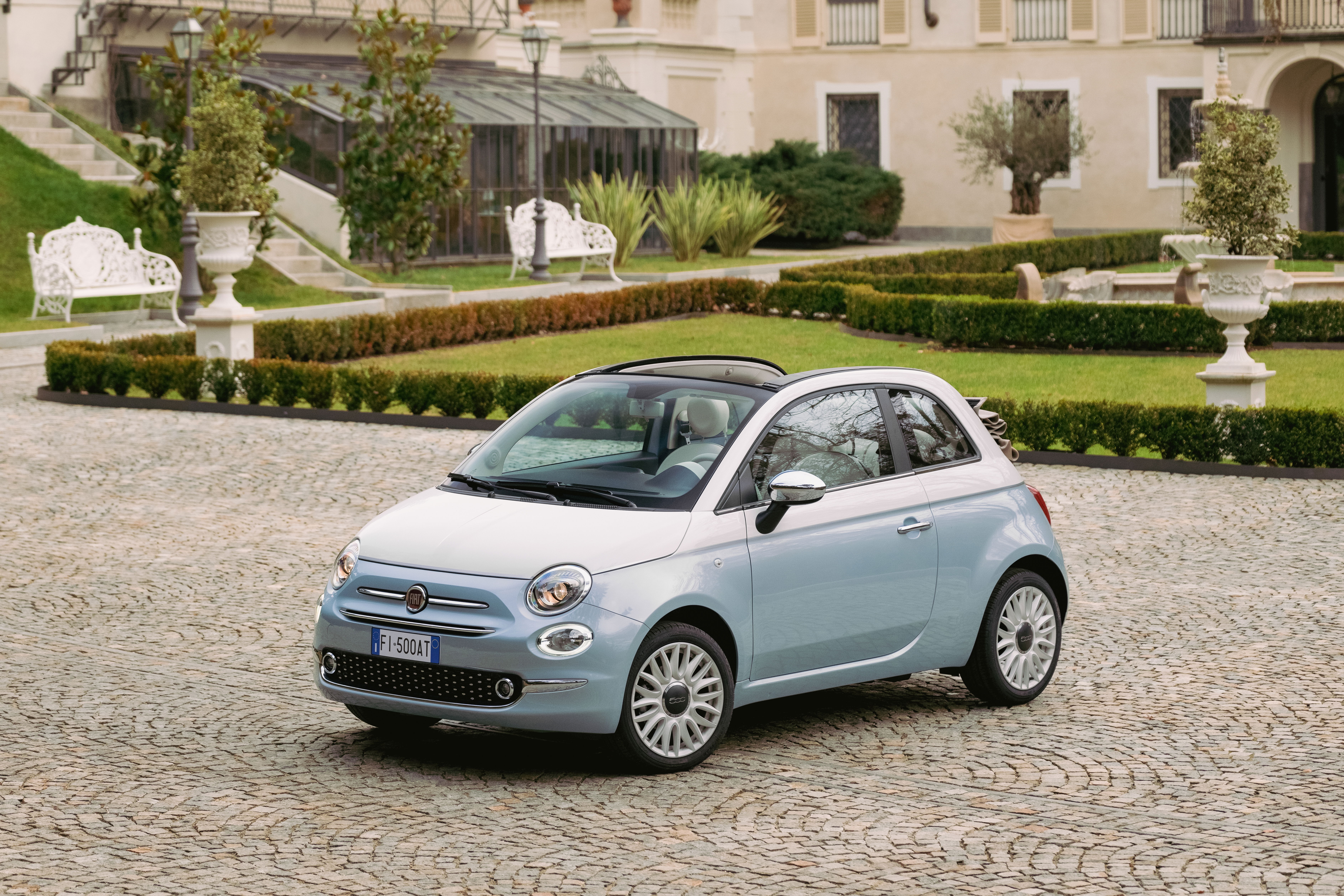
In 1936, Fiat introduced the front-engine Fiat 500 "Topolino" economy car. After World War II, production resumed in 1949 with the 500C model, featuring revised front and rear bodywork.
Initially, it came only as a 2-door coupé with a sunroof, later adding an Estate version with rear seating space. Both variants were replaced in 1957 by a new, lighter car with a rear-mounted engine akin to the Volkswagen Beetle.
This design trend gained traction with other manufacturers. Additionally, a 'Neckar' version was produced in Germany in October 1961, and a licensed Fiat 500 was made in Austria by Steyr-Puch.
Despite its small size, the 500 enjoyed significant sales in Europe, including the Giardiniera estate variant with a longer wheelbase and full-length sunroof. Abarth and Giannini produced sports models, while Steyr-Daimler-Puch created the Steyr-Puch 500 with a boxer twin motor.
Production ceased in 1975, replaced by the Fiat 126, which found success in Eastern Bloc countries. The Fiat 500 boasted a commendable aerodynamic resistance coefficient (Cx) of 0.38. In 2006, Top Gear named the Fiat 500 "the sexiest car."
The 50th anniversary in 2007 saw Fiat unveiling a new 500 model, inspired by the 1957 Nuova 500 but featuring a front-mounted engine and front-wheel drive.
In 2017, Fiat commemorated the 60th anniversary with an exhibit at the Museum of Modern Art in New York City and received a Corporate Art Award at an event hosted by the President of Italy at the Quirinal Palace.
Fiat 500 Models Over The Years
Nuova 500 (1957–1960)

A Nuova 500, as it was launched in 1957, preserved in the Centro storico Fiat.
The Nuova 500, named after its 479 cc (500cc nominal) two-cylinder engine, boasted a mere 13 horsepower. Sporting a fabric roof that folded to the rear, reminiscent of the Fiat 500 Topolino, this model was one of the few to feature "suicide doors."
A total of 181,036 Nuova 500 units, including the Sport model, were manufactured between 1957 and 1960.
Nuova 500 Sport (1958–1960)
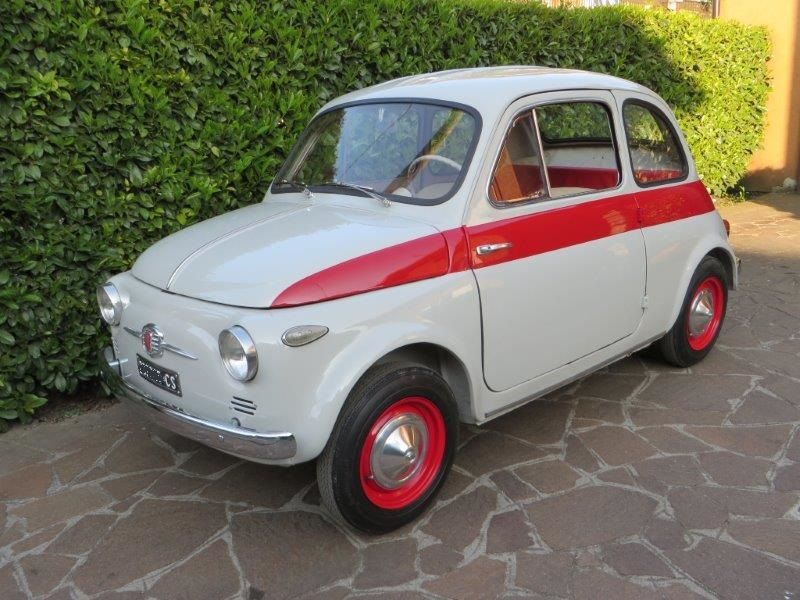
1958-1960 Fiat Nuova 500 Sport - Photo credit: Pinterest
Introduced in mid-1958, the Nuova 500 Sport came with a more robust engine and a striking two-tone white with a red stripe along the flanks. It uniquely featured an all-metal rigid roof with three longitudinal grooves. A short-open-roof version was added in 1959.
The Sport's upgraded two-cylinder engine, now at 499.5 cc, churned out what was an impressive 21.2 horsepower (15.8 kW; 21.5 PS), achieving a top speed of over 65 mph (105 km/h).
500 D (1960–1965)
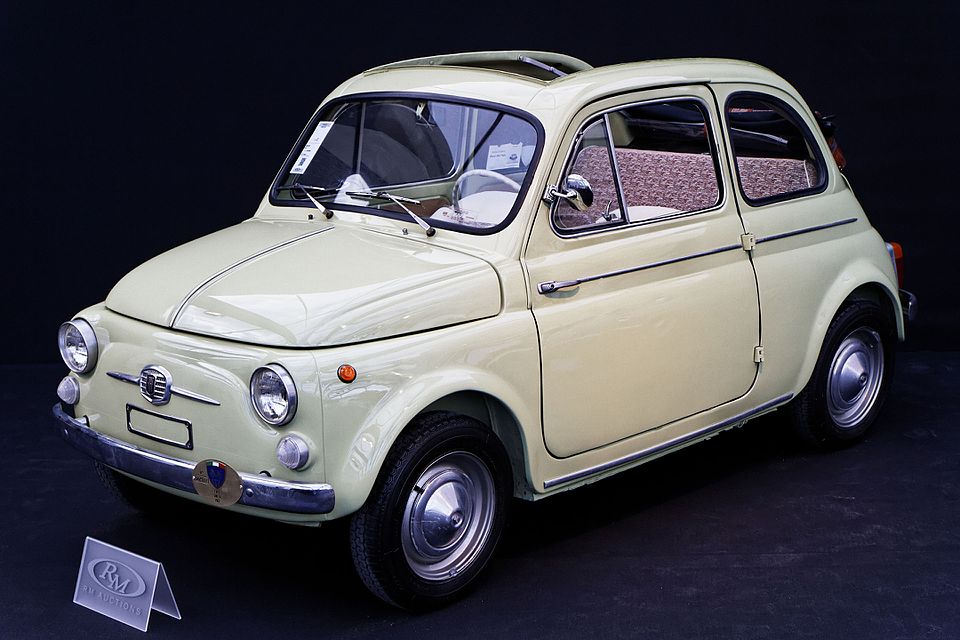
1963 Fiat 500 D - Thesupermart via Wikimedia
Replacing the original Nuova in 1960, the 500 D shared a similar appearance but featured an uprated 499 cc engine producing 17 horsepower as standard. It differed in its roof design and was available as the "Transformable" with a roof that folded back like the Nuova.
Retaining the iconic "suicide doors," it was sold in New Zealand as the "Fiat Bambina."
500 Giardiniera (1960–1968)
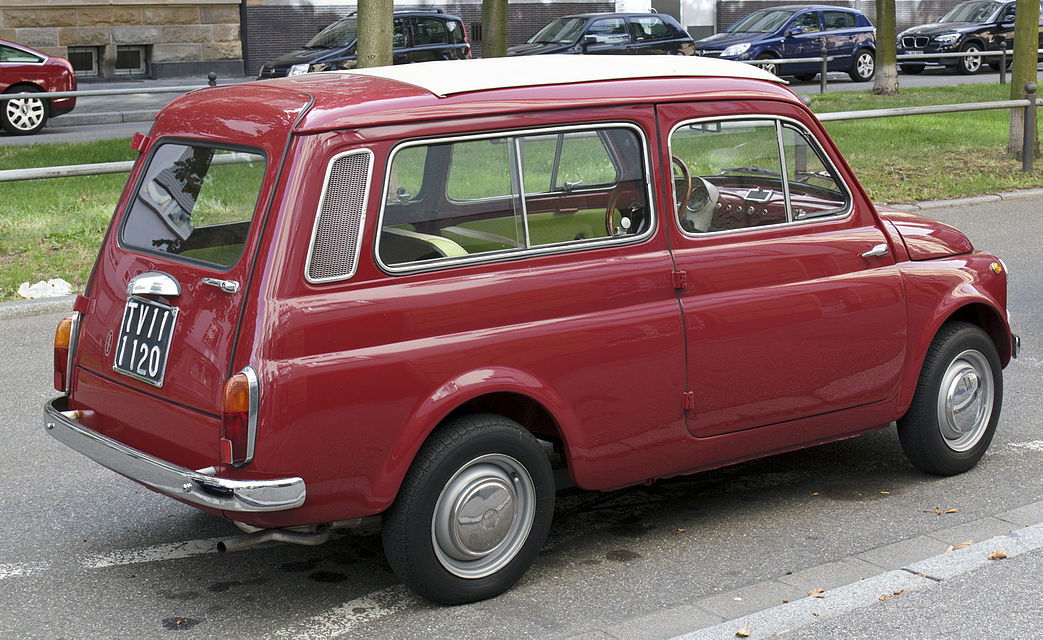
Photo credit: Rudolph Stricker via Wikimedia
The 500 Giardiniera, or 500 K in some markets, was the estate version with a unique layout, placing the engine under the boot floor for a flat loading surface. Its roof extended to the rear, and it retained "suicide doors."
Production moved to Desio in 1966, where Fiat subsidiary Autobianchi continued manufacturing the Giardiniera until 1977.
500 Furgoncino
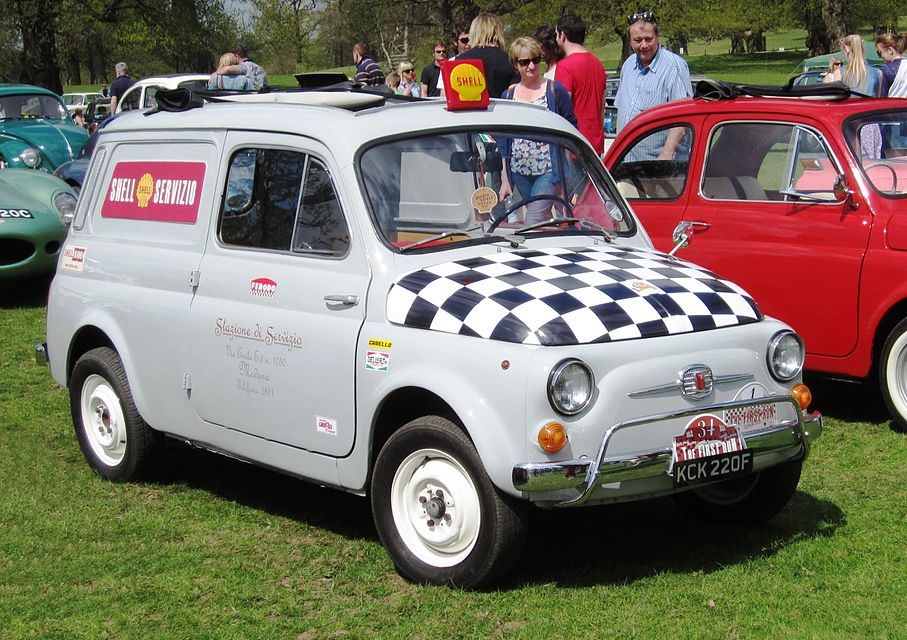
1968 Fiat 500 Furgoncino - Photo credit: Charles01 via Wikimedia
This was a panel van variant of the Giardiniera designed for transporting goods. The Furgoncino was popular in Italy and other European countries during the 1960s and 1970s due to its mix of compact size and versatility for urban delivery purposes.
500 F or Berlina (1965–1972)
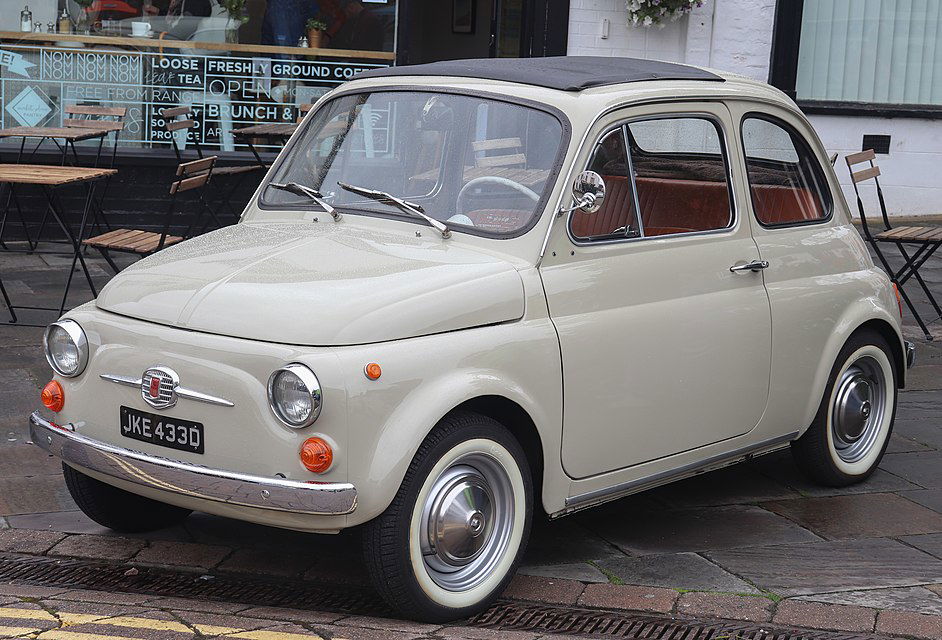
Photo credit: Vauxford via Wikimedia
The 500 F spanned the production periods of the D and the L models. It featured front-hinged doors, unlike the "suicide doors" of the D. Between 1969 and 1972, it was sold alongside the Lusso model as a more affordable alternative.
See also: Orders Now Open For Europe's Cheapest Electric Car: The All-New Citroen e-C3 – Review
500 L or Lusso (1968—1972)
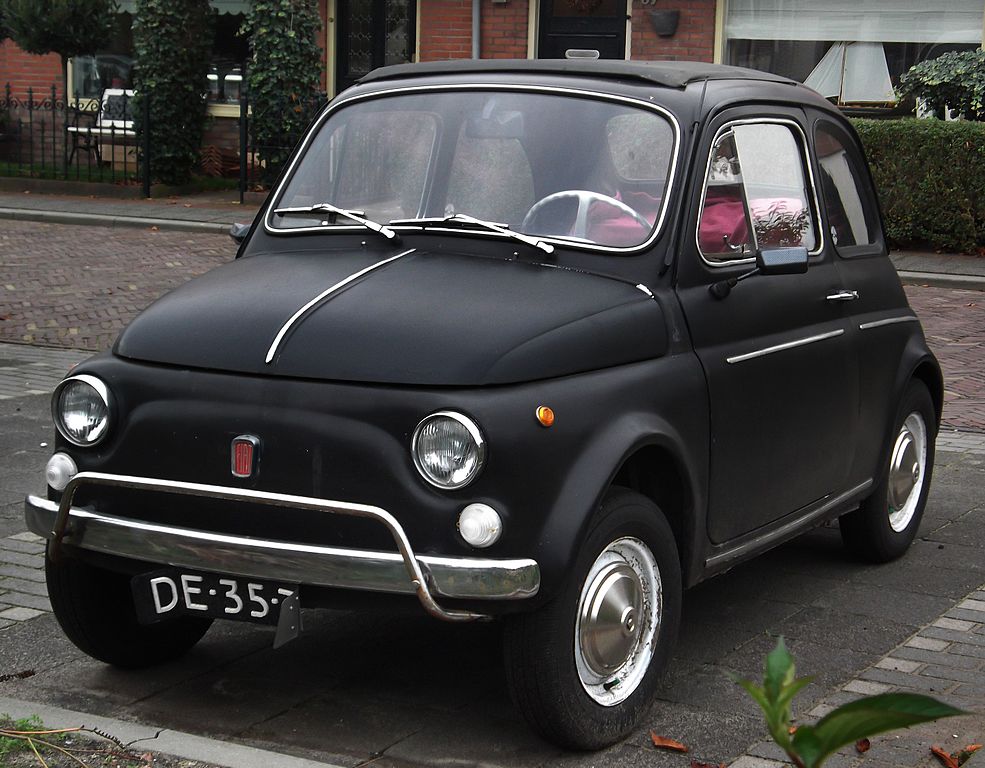
1968 Fiat 500 L or Lusso - Dennis Elzinger via Wikimedia
The 500 L, or Lusso, introduced in September 1968, was a more luxuriously trimmed version of the standard 500 F. Notable exterior additions included tubular guards protecting the bumpers and chrome plastic moldings.
Inside, it featured a redesigned dashboard and door cards upholstered in pleated pattern leatherette.
500 R or Rinnovata (1972—1975)
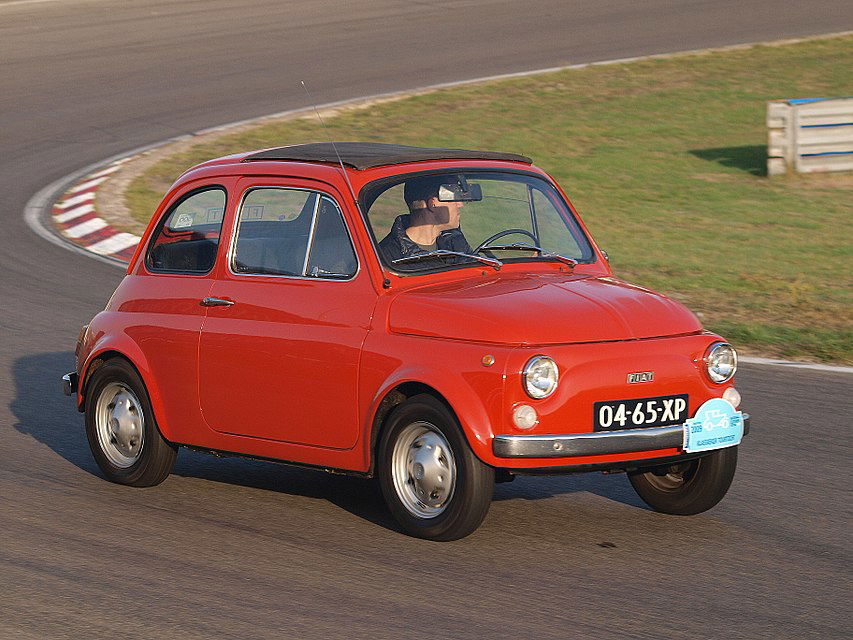
Photo credit: AlvanBeem via Wikimedia
The final iteration of the Fiat 500, the R model, or "Rinnovata," debuted alongside the Fiat 126 in November 1972. It shared the 594 cc engine of the 126 but retained the power output of the L model.
It served as a transitional model before the launch of the Fiat 126, coexisting with it for three years before Fiat discontinued the 500.
Fiat 500 America
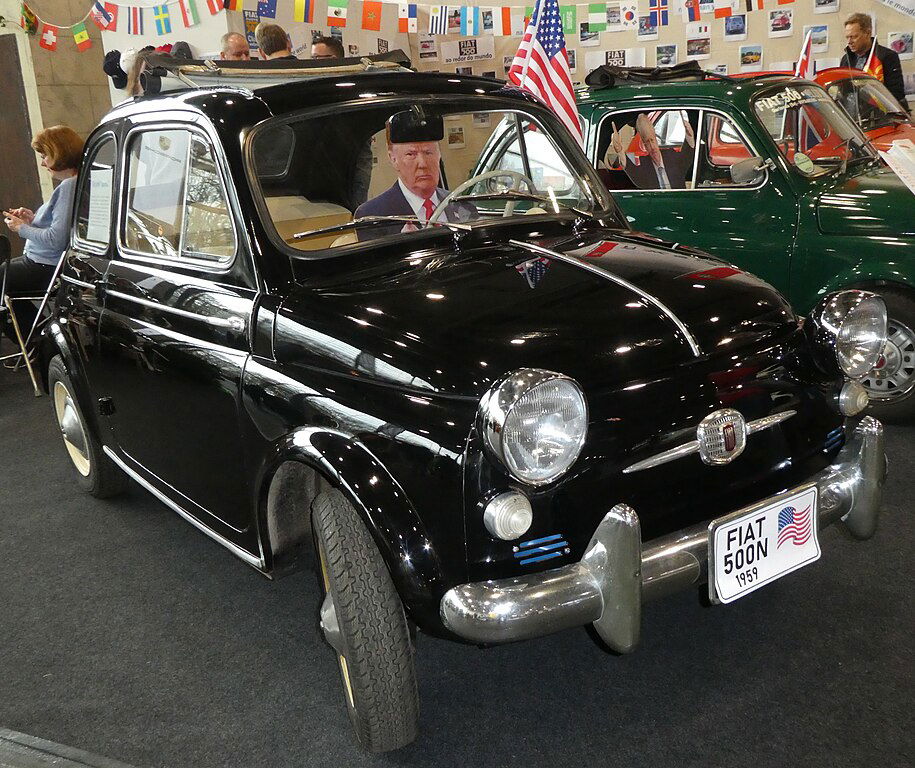
Photo credit: Andrew Bone via Wikimedia
A US-market version of the Fiat 500 was produced with prominent headlamps, akin to the American 500 Jolly. Approximately 300 units were made between 1958 and 1962.
2007 Fiat 500
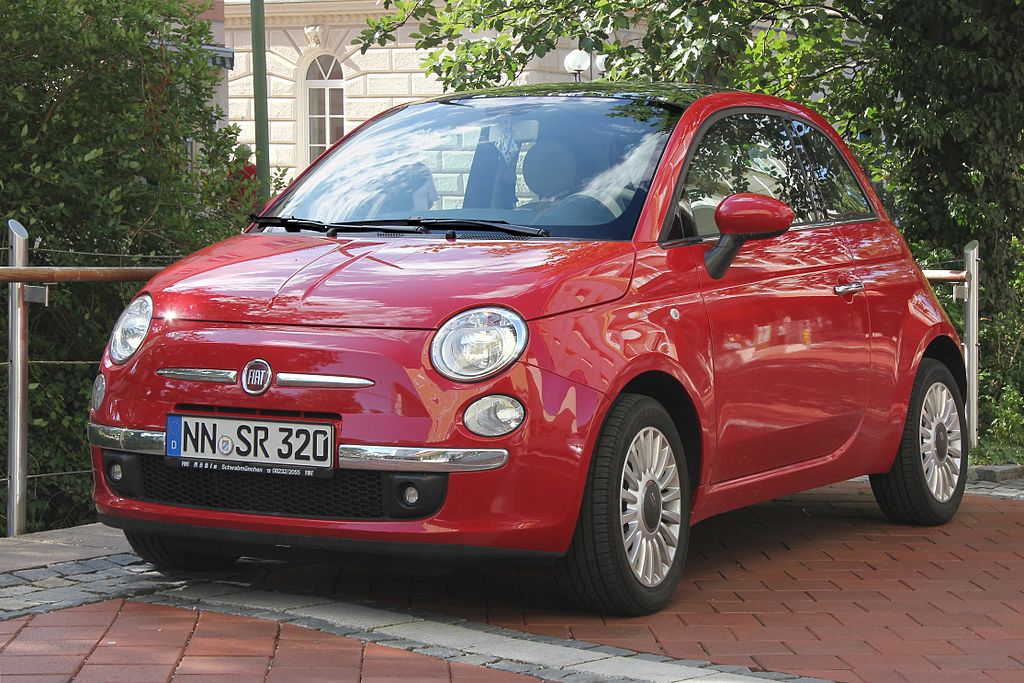
Photo credit: Lothar Spurzem via Wikimedia
Launched in March 2007, the 2007 Fiat 500 marked the rebirth of the iconic model, taking inspiration from Dante Giacosa's original design. It featured a retro-style exterior and modern amenities, with production starting in Poland and later expanding to Mexico.
The 500 was also available in Abarth trim, equipped with a 1.4L Turbo Petrol engine and sport-oriented enhancements. The Fiat 500 platform served as the foundation for the second-generation Ford Ka.
The New Fiat 500 Collectors Edition
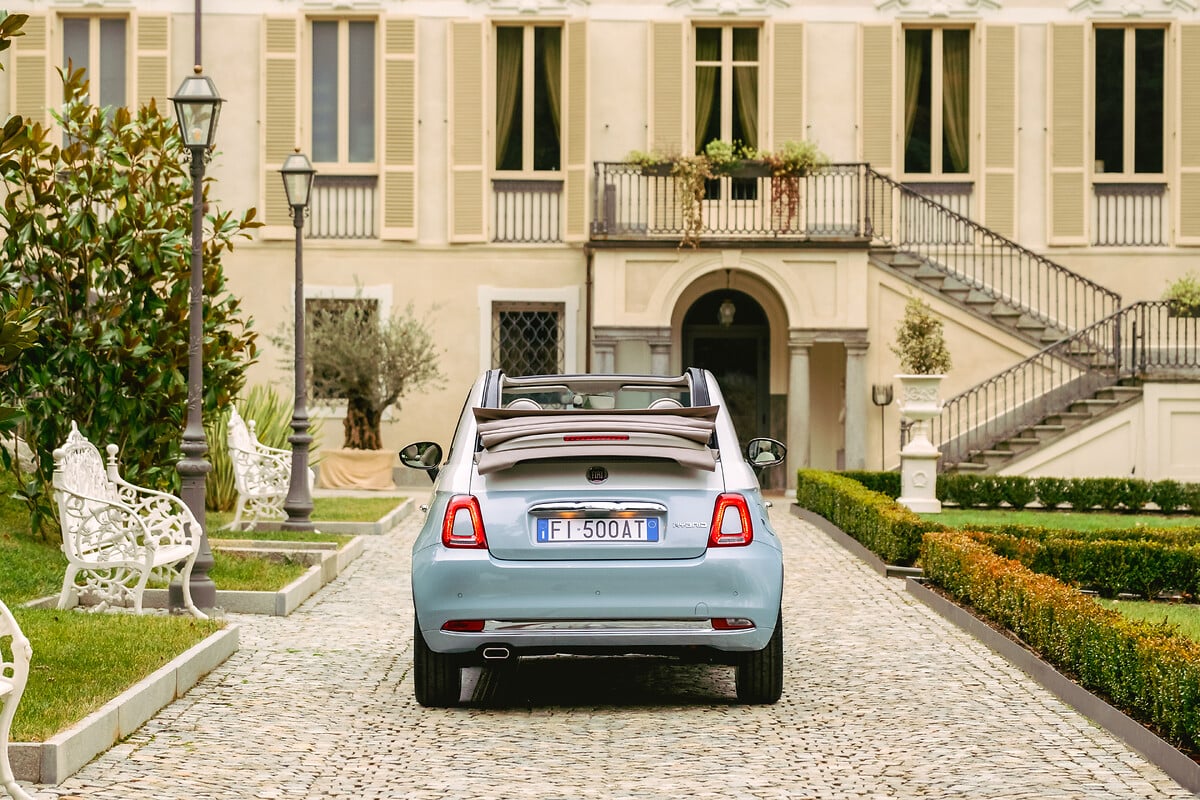
The Fiat 500 Collezione 1957 distinguishes itself with its elegant cabrio design and exclusive features. Its exterior showcases a two-tone White Gelato and Rugiada Green bodywork with a Beige capote, complemented by the new Silver Beauty Line and 16" White Diamond alloy wheels.
Paying tribute to its heritage, the Collezione 1957 features chrome mirror caps and a 1957 serigraphy 3rd light, seamlessly blending past and present.
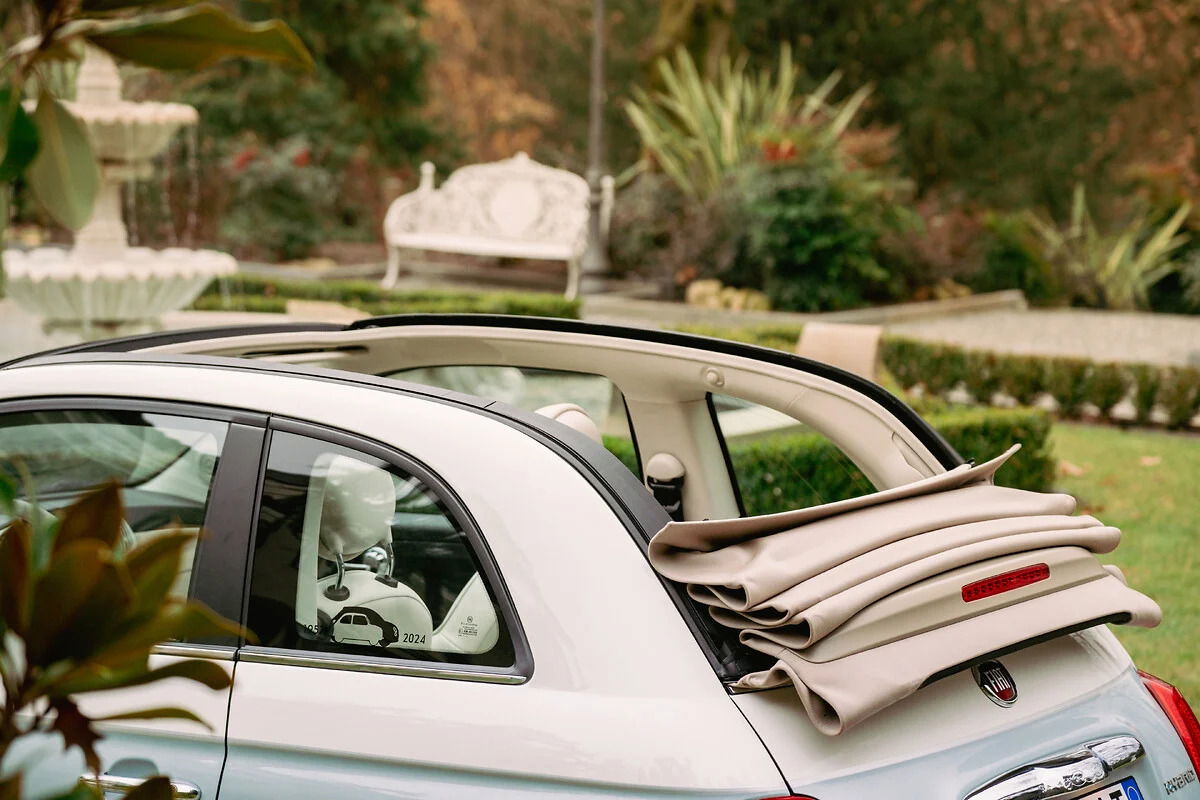
Inside, ivory-wrapped seats with Frau Leather inserts and a unique "ONE OF 1957" embossed logo, along with a wooden dashboard and a dedicated numbered plate on the central tunnel, create a captivating ambiance.
Beyond aesthetics, this limited edition incorporates chrome details, LED DRL, fog lights, and a 7" TFT digital display as standard. Enhanced connectivity is provided by MOPAR CONNECT, offering safety, monitoring, and convenience features.
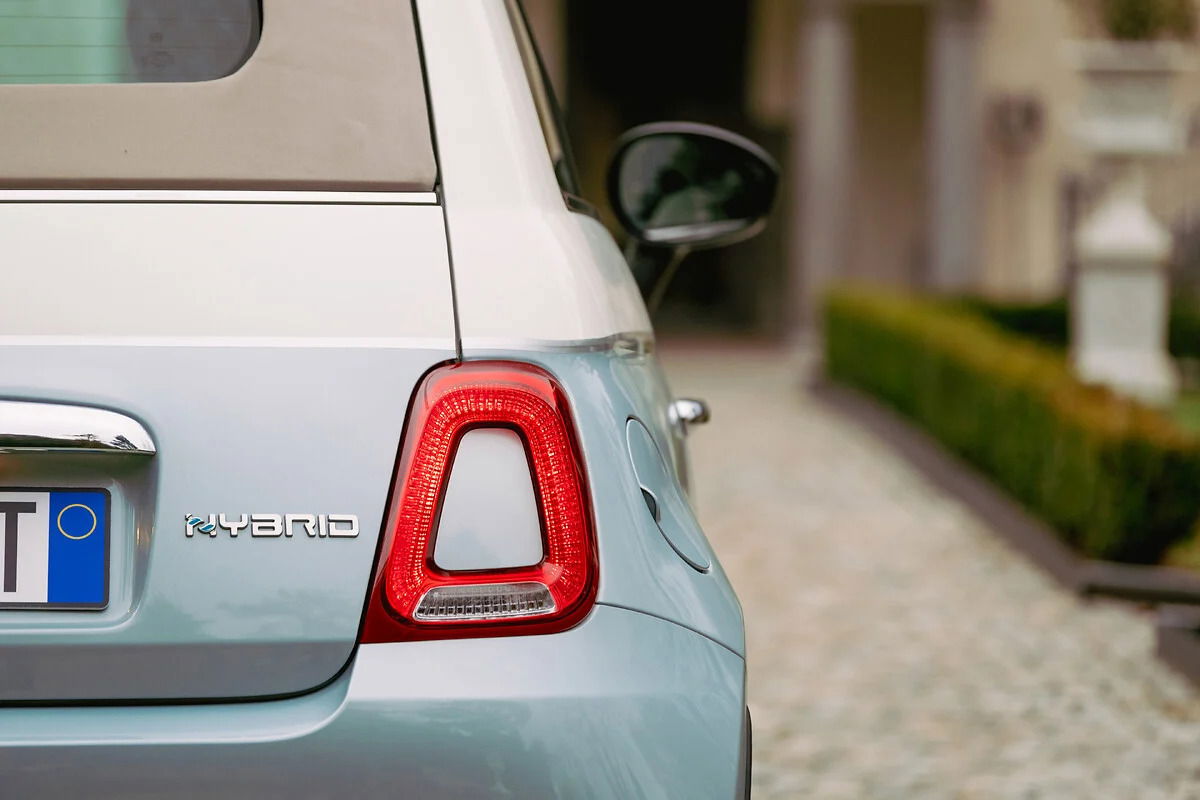
Powered by a 1.0 Hybrid engine delivering 70 horsepower and coupled with a manual transmission for the European market, or a 1.2-liter engine with 69 horsepower and an MTA system for the Japanese market, the Fiat 500 Collezione 1957 embodies timeless automotive craftsmanship and innovation.
Since 2007, over 3.2 million Fiat 500 units have been sold worldwide, with more than 2.7 million in Europe.
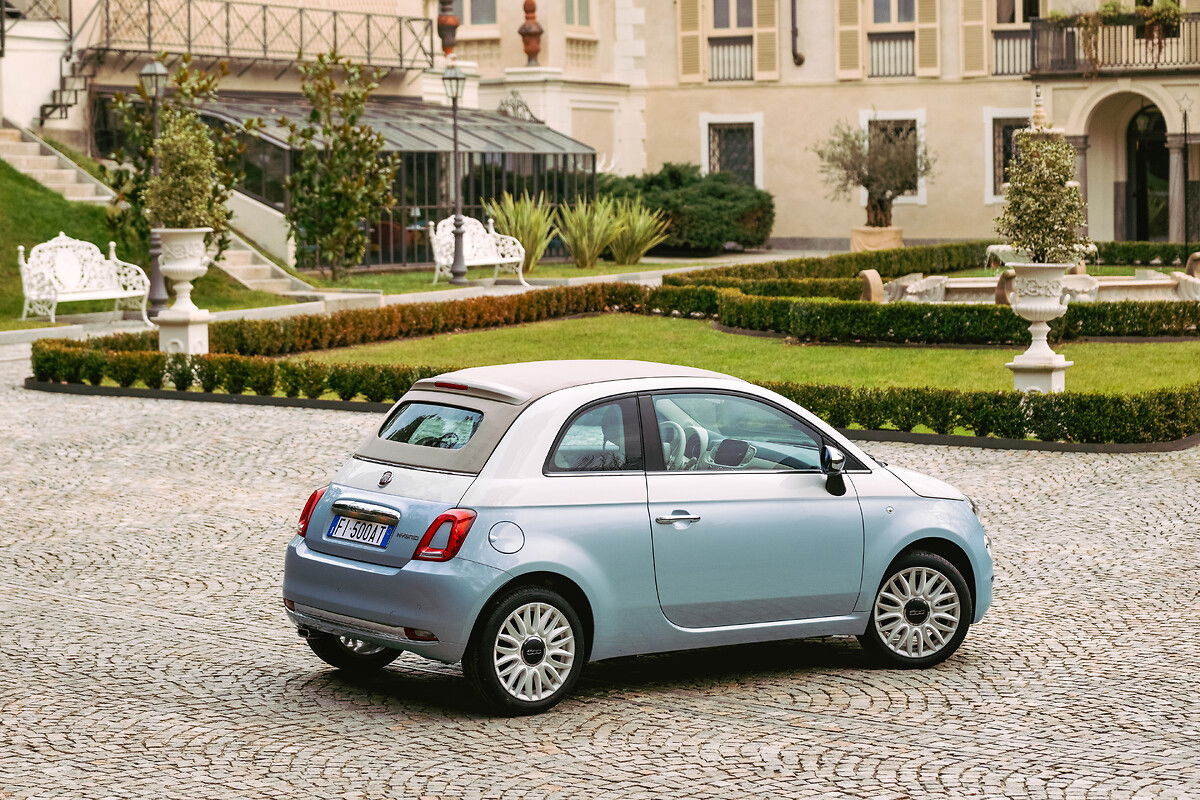
In 2023, it ranked as the second best-selling city car in Europe, with 109 thousand units sold and a market share of 20%. It holds the top spot in the A segment in countries like Germany, Spain, Austria, Belgium, and Portugal.
Over its three generations spanning 67 years, the Fiat 500 has evolved from an icon of Italian mobility and freedom of movement in 1957 to a global fashion and style icon in 2007.

The third generation, introduced in 2020, continues the legacy by revolutionizing urban mobility with sustainability and electrification at its core, showcasing a host of innovations and technologies.